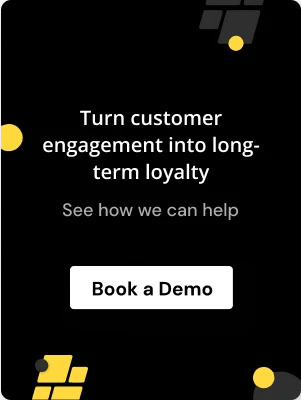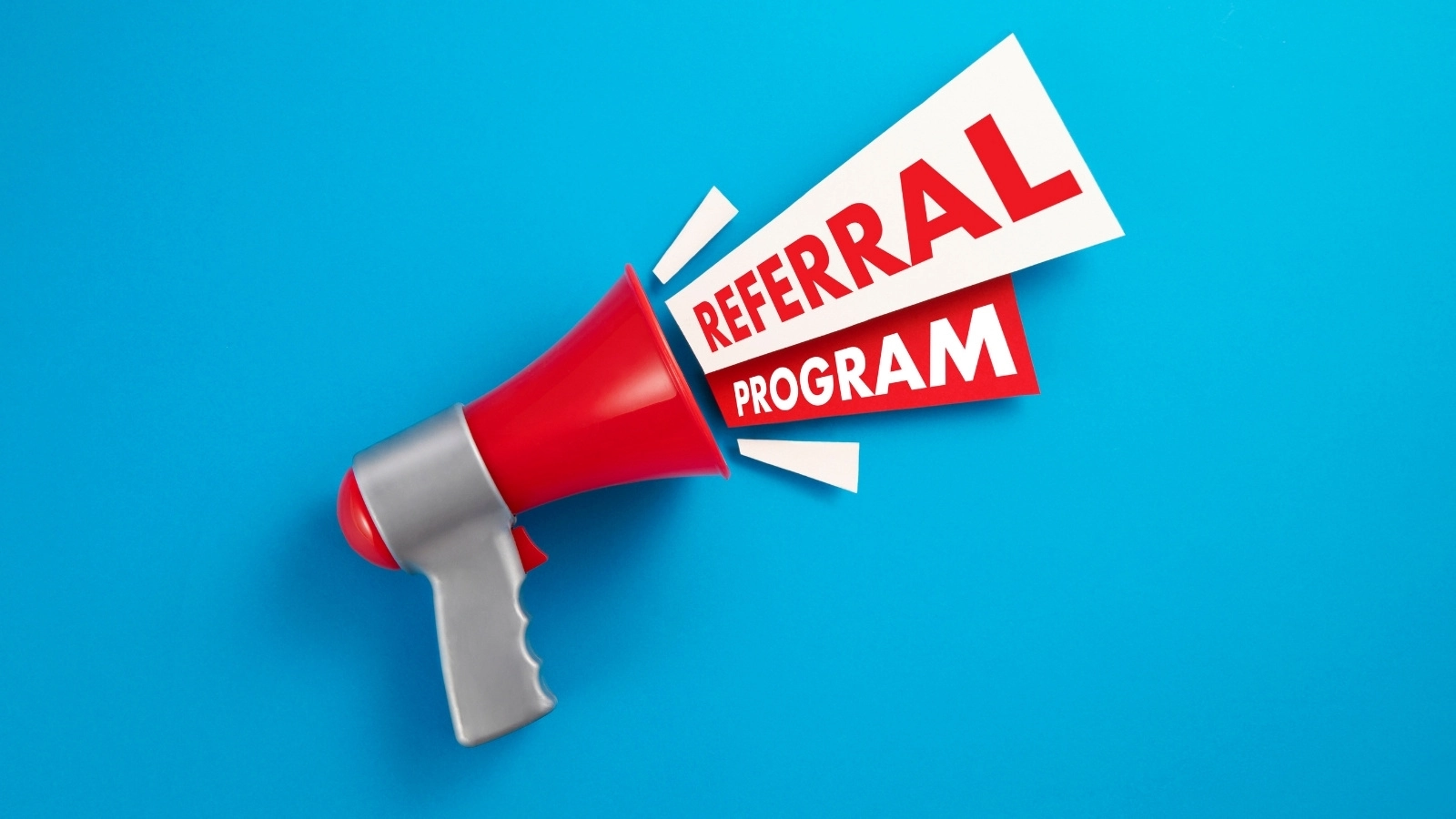.avif)
.avif)
A customer referred by someone they trust is already halfway to conversion. Referrals are not just cost-effective; they’re high-converting, loyalty-driving, and reputation-building.
Customers referred by others often stay longer, engage more meaningfully, and deliver better returns. Referral leads convert 30% better and have a 16% higher lifetime value than non-referral leads, making them a critical lever for improving acquisition quality and long-term growth.
Yet many businesses treat referrals as luck rather than a channel for growth and scaling. This blog breaks down the mechanics of referral marketing, explains why it works so effectively, and provides actionable tactics to build and grow a high-performing referral engine.
What Are Referrals?
Referrals happen when a satisfied customer introduces your brand to someone in their circle. Unlike passive word-of-mouth, a referral is an active endorsement grounded in direct experience. It reflects both trust in your product and confidence in its ability to deliver real value. A single happy customer can generate up to nine referrals, showing the exponential potential of delight-driven advocacy.
According to research, 92% of consumers trust referrals from people they know, making them one of the most credible sources of customer acquisition.
In a marketplace saturated with marketing claims, referrals offer a more credible path to discovery. They lower entry barriers for new prospects, fast-track decision-making, and often come with built-in trust. Because they originate from genuine customer belief, referrals require fewer follow-ups and reduce acquisition costs.
This leads us to an important consideration: what specific advantages do referrals bring to your business?
What Are Its Benefits?
.avif)
Referral customers bring more than just conversions; they bring momentum. These customers:
- Have higher purchase intent, leading to quicker decision-making.
- Stay loyal for longer periods, thereby enhancing retention metrics.
- Generate more revenue across their lifecycle.
Referral programs also foster a compounding network effect. Happy customers refer others, who in turn become advocates themselves. This creates a cycle of organic growth that reduces reliance on paid channels and drives sustained brand equity. With features like automated reward distribution and real-time referral tracking, Nector makes it easier to activate this network effect at scale.
For businesses seeking to strike a balance between performance and cost efficiency, referrals are not an add-on; they’re a strategic asset. Before optimizing a program, it's essential to understand what makes your brand inherently shareable. This brings us to a critical step in building an effective referral strategy: identifying your most referable qualities.
Pinpointing What Makes Your Brand Worth Sharing
To build an effective referral program, begin by identifying what consistently earns customer praise. Referrals typically emerge from moments when your product or service delivers unexpected value and experiences that feel not just efficient, but memorable.
Start by reviewing your direct customer feedback. This includes reviews, support chats, survey responses, and feedback forms. Identify recurring positives, do customers talk about how easy it is to get started, how quickly they get help, or how dependable your product is? These repeated themes reveal what customers genuinely value and what they might be eager to recommend to others.
Then, examine behavioral patterns from your most loyal referrers:
- What offerings do they engage with most?
- How often do they return or interact?
- Are there shared characteristics in their support interactions or account lifecycle?
Identifying these patterns helps spotlight which product features or touchpoints foster advocacy. Designing reward triggers around your brand’s authentic strengths not only reinforces trust but also encourages consistent advocacy rooted in genuine value.
Also Read: How to Increase Customer Engagement with Shopify Referral Programs.
Building a Structured Referral Program
.avif)
An effective referral program turns satisfied customers into enthusiastic promoters. Rather than relying on chance word of mouth, it builds a predictable, trackable system for acquiring high-quality leads. When executed effectively, this system enhances acquisition efficiency, fosters trust, and reinforces long-term loyalty.
1. Define Measurable and Relevant Goals
Start with clarity. Do you want to increase the volume of referrals, attract higher-converting customers, or elevate lifetime value? Map each goal to specific metrics, such as referral rate per user, cost per acquisition, or revenue sourced from referrals. These metrics help you evaluate and refine your program over time.
2. Create Reward Models That Motivate and Scale
Design incentives that feel valuable to the customer and make financial sense for your business. Use:
- Tiered rewards to reward top advocates without overspending.
- Flexible benefits like credits, early access, or loyalty points.
- Clear earning rules that drive participation without confusion.
Gamified referral programs using leaderboards, badges, and time-bound bonuses have been shown to boost referral activity and re-engagement significantly. Keep rewards aligned with your customer profile to encourage both first-time referrals and continued engagement.
3. Streamline the Entire Referral Experience
Make it as easy as possible to refer. Use:
- Shareable links and QR codes.
- Pre-filled message templates for email, SMS, or social.
- CTAs are strategically placed in key moments, such as checkout or order confirmation.
Automate confirmation messages, status updates, and reward delivery to maintain momentum without manual follow-up. Tools like Nector offer built-in workflows that handle each stage of the referral process with precision.
When your referral process is easy to use and the incentives align with customer expectations, the program becomes a reliable and efficient engine for growth. It minimizes acquisition costs, deepens brand trust, and encourages ongoing customer advocacy.
Also Read: How Nector.io’s Referral Programs Help in Reducing Customer Acquisition Costs.
The Art of Asking for Referrals Effectively
Even with a well-designed referral program, initiating the ask can often feel uncomfortable. However, when aligned with genuine customer satisfaction, it becomes a natural outcome of positive brand experiences.
Recognizing the Right Moment to Ask
Referrals work best when timed with peak customer satisfaction, when your brand is top-of-mind, and trust is high. In fact, 78% of brand advocates who refer products report feeling a stronger connection to the brand, reinforcing why timing and sentiment matter. This could be:
- Right after a purchase is completed.
- When a customer leaves a positive review.
- Following a significant milestone or success with your product.
Catching customers when they're most engaged increases your chances of a positive response.
Making Referral Conversations Feel Comfortable
A well-worded message can make a big difference. Here are some tactful ways to ask:
- "We're glad you're enjoying the product. Is there someone else who might benefit from it, too?"
- "Thanks for your great feedback! If someone comes to mind who'd find value here, we'd love your referral."
These prompts acknowledge the customer’s experience and ease into the request without making it feel transactional.
Following Up the Right Way
Not every customer will respond immediately, and that’s okay. Follow-ups should be friendly, not forceful. Try:
- "Just a quick note to see if you had anyone in mind for our referral program. No rush, reach out anytime."
This keeps the conversation open without applying pressure.
Approached with tact and timing, referral requests strengthen the customer relationship by making them feel valued and heard. Referral programs have a 3x higher conversion rate than traditional marketing channels, highlighting their effectiveness in turning satisfied customers into high-value leads.
Ready to turn referrals into reliable growth?
Explore how Nector’s flexible, fraud-proof referral system can help you drive high-converting, personalized referrals without disrupting the customer experience.
Also Read: Mastering Referrals & Reviews: Boost Your Shopify Sales & Loyalty | Nector.io.
Technology Tools to Streamline Your Referral Network
.avif)
Today’s referral programs require more than spreadsheets and manual emails. With the right tools, you can save time, increase engagement, and make smarter decisions at every step.
CRM Integration for Referral Intelligence
Your CRM can do more than just store customer data; it can power a more efficient referral process.
- Track Referral Activity: See who’s inviting, signing up, and converting, all in one dashboard.
- Automate Follow-ups: Send timely reminders or thank-you messages without extra work.
- Segment Referrers: Spot your top promoters and customize your future outreach.
When integrated correctly, your CRM helps create a more personal and scalable experience.
Referral Platforms by Business Stage
As your business grows, your referral setup should evolve too. The right tool depends on where you are:
- Startups: Simple, ready-to-use tools that help you launch quickly.
- Mid-sized Brands: Platforms with analytics, A/B testing, and support across channels.
- Large Businesses: Advanced systems that offer fraud detection, API flexibility, and complex workflows.
Choosing a platform that matches your stage helps you stay agile while scaling performance.
Using Social Proof to Boost Referrals
People trust people. Including real customer stories or feedback in your referral messages makes a big difference. Here’s why it works:
- Makes your brand more trustworthy.
- Helps new customers relate to your message.
- Deepens the bond between your brand and community.
Adding social proof helps turn regular customers into enthusiastic brand ambassadors.
Investing in these tools isn’t just a tech upgrade; it builds the foundation for a referral strategy that evolves with your growth. Tools like Nector offer built-in referral tracking, CRM integration, and reward automation, making it easier to scale without losing control.
One powerful yet often overlooked method to expand your referral network is by establishing collaborative relationships with complementary businesses.
Also Read: The Psychology Behind Referrals: Why People Recommend Brands They Love
Developing Strategic Partnerships for Cross-Referrals
Partnering with aligned businesses can open efficient referral pipelines and accelerate sustainable growth. It's about leveraging shared audiences without overlapping offerings.
Identifying Complementary Business Relationships
Focus on partnerships with brands that serve the same target audience but solve different problems. For example, a wellness coach and a skincare brand can collaborate to enhance customer value without cannibalizing each other's market. This ensures referrals feel organic rather than forced.
Not sure whether to partner through referrals or affiliate models? Here’s a detailed comparison of Referral vs Affiliate Programs for different business types.
Creating Win-Win Referral Arrangements
Structure referral partnerships with clear terms and measurable incentives. Options include:
- Co-branded marketing campaigns to drive dual visibility.
- Exclusive bundled offers for referred customers.
- Revenue-sharing models that incentivize both parties in the long term.
These elements build mutual accountability and create repeatable, trusted processes.
Nurturing Professional Networks for Ongoing Referrals
Build relationships beyond the initial handshake. Engage consistently through:
- Quarterly check-ins to share updates and insights.
- Joint workshops, newsletters, or podcasts.
- Dedicated partner channels for easy communication.
This fosters trust and positions your brand as a dependable collaborator.
When well-executed, strategic alliances evolve from referral sources into long-term growth engines. They don’t just widen your reach, they strengthen it by operating through trusted voices within relevant ecosystems.
To ensure that your referral partnerships remain effective over time, it’s critical to assess their performance and make data-backed adjustments regularly.
Also Read: Loyalty vs Referral Programs: Key Differences & When to Use Each
Measuring and Optimizing Your Referral Strategies
.avif)
A referral program isn’t a set-it-and-forget-it system. To stay impactful, it needs regular monitoring and thoughtful adjustments based on how users engage. Track performance data, spot drop-offs, and use those insights to make continuous improvements that keep the program relevant and practical.
Key Metrics That Show What’s Working
Track these specific indicators to understand what’s driving results:
- Referral Volume – How many referrals are generated each week or month?
- Conversion Rate – What percentage of referred users become paying customers?
- Customer Lifetime Value (CLTV) – Are referred customers staying longer or spending more?
- Time to Conversion – How quickly do referrals move from lead to sale?
- Reward Redemption – Are your rewards motivating users to refer more often?
Try, Test, Repeat: Optimizing for What Works
Every audience is different. Run small experiments to find what resonates best:
- Incentives – Compare reward types like discounts, credits, or tiered perks.
- Prompts – Test the language and timing of referral asks.
- Segments – Target power users or high-engagement cohorts with tailored messages.
Use simple A/B tests, track the results, and iterate accordingly.
Also Read: How to Design a Referral Program That Drives Repeat Purchases to align your reward structure with user behavior and conversion goals.
Turn Insights Into Action
Use a continuous feedback loop to refine your program:
- Spot where referrals drop off in the process.
- Listen to user feedback to remove friction.
- Adjust the flow to make referring easier, faster, and more rewarding.
Even minor, data-informed adjustments can significantly improve referral performance. With tools like Nector’s referral analytics, you gain real-time visibility into what’s working and where to iterate, allowing your team to scale the program confidently and avoid wasting effort.

Building a Referral Culture that Lasts
Referrals aren’t just a channel, they’re a long-term advantage built on trust. By creating memorable customer interactions and forming authentic partner connections, you make it easy for others to advocate on your behalf.
A structured referral ecosystem ensures your growth strategy is not left to chance. With Nector, you can pinpoint your most engaged customers, automate timely referral prompts, and reward advocacy in ways that feel natural, not forced.
It’s about simplifying the act of sharing while making it genuinely worthwhile for both the advocate and the referred customer. When loyalty turns into advocacy, your growth engine becomes self-sustaining.
Book a free demo to see how Nector can help you unlock the full potential of your referral strategy.
FAQs
How can I measure the success of my referral program beyond conversion rates?
Alongside conversion rates, track Customer Lifetime Value (CLTV), time-to-conversion, and referral churn rate. These metrics help you assess long-term impact and the quality of referred customers.
What’s the best way to prevent abuse or fraud in a referral program?
Implement clear referral rules and use referral tools with fraud detection features. Monitor for patterns like multiple referrals from the same IP or suspicious account behavior.
Should my referral rewards be the same for advocates and new customers?
Not always. Dual incentives are common but should align with your goals. For example, offer advocates loyalty points and provide new customers with a discount to enhance initial conversions.
How do I keep my referral program engaging over time?
Refresh the program periodically with limited-time campaigns, leaderboard incentives, or tiered rewards to sustain interest and participation.
Start Building Customer Retention That Lasts





.webp)
%201%20(1).webp)


